Garlic is an extremely healthy vegetable, regular consumption of which improves immunity. Due to its gastronomic properties, such a product is indispensable in various dishes, highlighting and emphasizing their taste. Correct planting of garlic in the autumn in the Donbass will guarantee a good harvest in the garden.
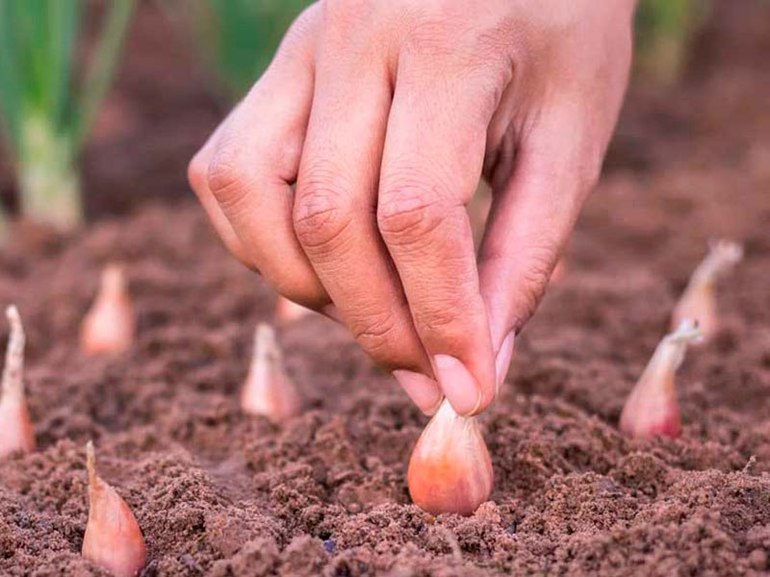
Content
Culture Description
Garlic is a bulbous plant native to Southeast Asia. This vegetable has an original specific taste, persistent aroma, so it is successfully used in the cuisines of North Africa, most countries in Asia and the Mediterranean. Growing garlic is not difficult. There are two options.:
- Spring with a spring landing.
- Winter, which is planted in the fall in September - October.
Accordingly, depending on the chosen agricultural technology of growing garlic, the dates of its planting will vary. In the southern regions, where relatively mild winters, early spring and hot long summers are observed, it is possible with success grow spring garlic, which greatly simplifies the care of planting. But in central Russia, most gardeners plant this crop in the fall, harvesting a year later, in early September - October.
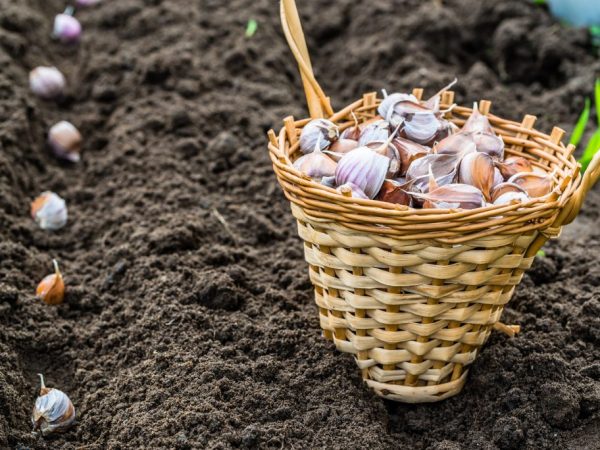 You may be interested in:
You may be interested in:Features of agricultural technology
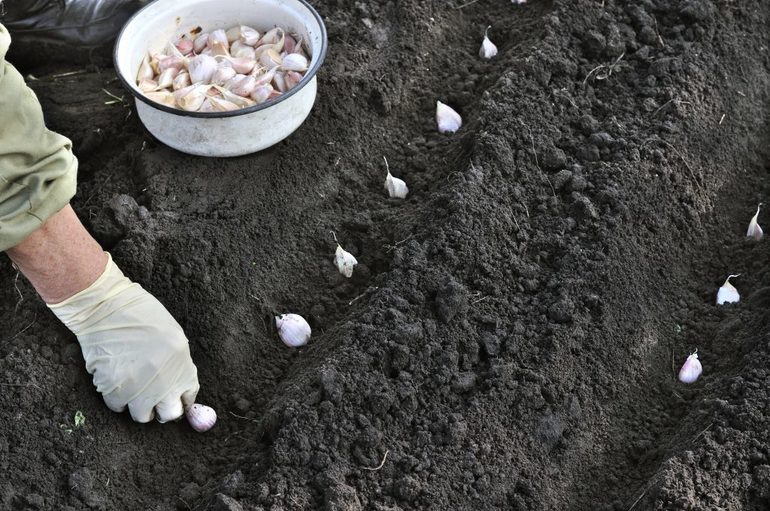
The choice of a specific technology for growing this crop will depend primarily on the climate in the region. In the middle zone of Russia, late frosts are noted, respectively, the gardener will need to not only choose the right planting time, but also subsequently perform high-quality warming of the beds, which will protect young plants from damage from the cold. Caring for winter garlic is not particularly difficult. Immediately after planting, the soil is mulched, and the protective layer is removed only at the end of April and May, when the danger of frost is completely over.
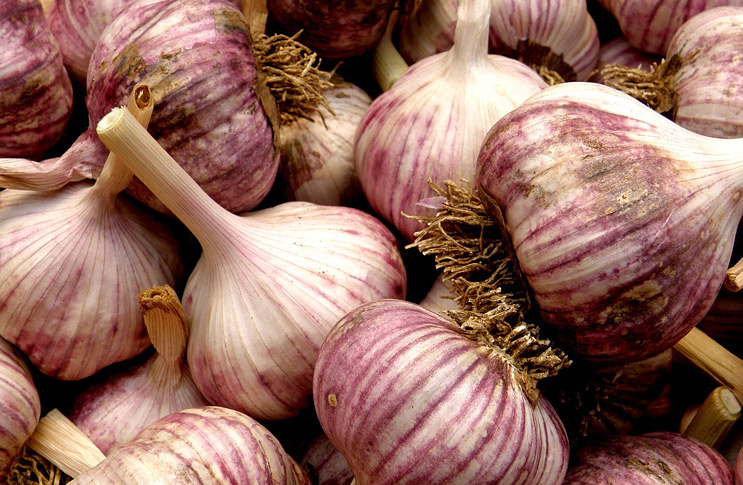 You may be interested in:
You may be interested in:Spring garlic, planted in early spring, is distinguished by its taste.At the same time, the grown crop is characterized by maximum keeping quality, which allows long-term storage of the grown onions. Winter - not afraid of frosts, easily tolerates cold winters, and caring for it is not particularly difficult. Winter varieties are immune to pests and diseases, while spring garlic will need to be sprayed against a bacterial infection and protected from numerous pests.
Landing time
In each case, the timing of garlic planting will vary, depending on the region, climatic features, weather forecasts for the coming days and weeks. In the fall, garlic should be planted 2-3 weeks before the onset of the first frost.This will allow plants to take root and easily tolerate frosty winters. Choose a planting date in such a way that the root system develops in the garlic, but a green mass does not form. Otherwise, the feathers that appear appear to freeze, destroying all planting material.
The terms for planting garlic in the fall are as follows:
- In the suburbs - the end of September and the first half of October.
- In the Urals and Siberia, garlic is planted in the second half of September.
- Planting garlic in the fall in the Kuban is carried out in late October and November.
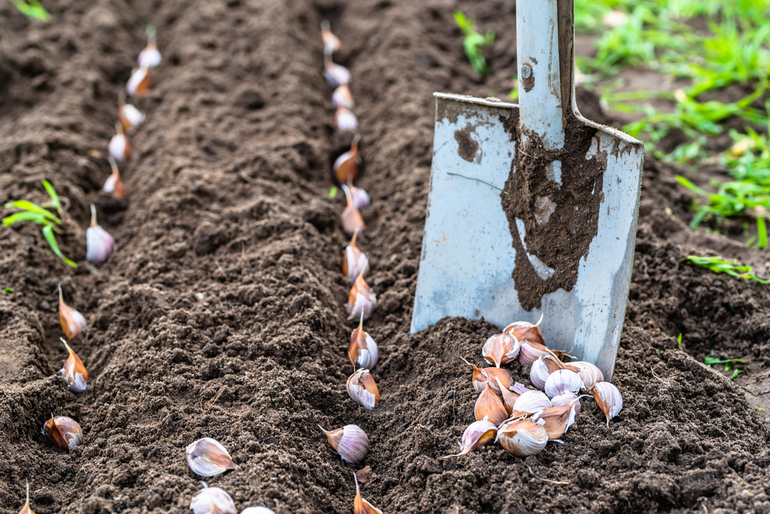
You can adjust these planting dates for winter garlic based on the climatic characteristics of the region and the specific weather. If the gardener knows that warm weather is planned in the coming weeks, then planting can be postponed for several weeks, this will allow to carry out such work correctly and get an excellent harvest.
Spring varieties are usually planted in spring at the end of March and in the first half of April. By this time, the soil should warm up to 10-12 degrees, and cooling below 5-10 degrees is already excluded. If possible, beds with planted spring garlic should be covered with mulch, straw, agrofibre or other materials. Such insulation is removed as soon as the danger of cold weather has passed.
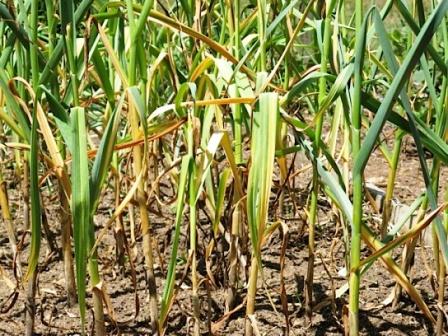 You may be interested in:
You may be interested in:Growing winter garlic
Landing in the fall requires the correct determination of the place for beds, preparation soil, the use of quality planting material and the provision of appropriate care for this vegetable crop. It is possible to use spring varieties, but such a vegetable will require complex care, while the yield indicators will be lower than during autumn planting.
Correct site selection
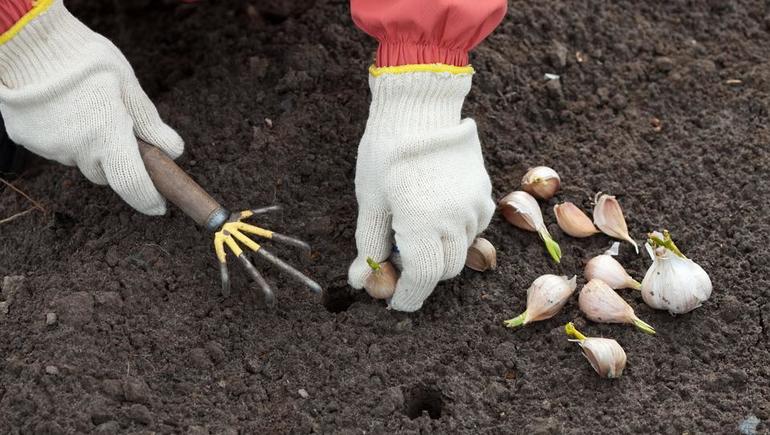
Garlic is a photophilous plant, so you need to plant it in well-lit areas. He also does not like high humidity, so it is preferable to choose areas on a hill or small hills. But in the lowland, additional drainage will be required to prevent flooding of the beds during spring snowmelt.
The technology of growing winter and spring garlic on high beds, which have plastic or wooden sides, is very popular. This allows you to solve the problem with planting: the soil is well warmed up, so the plants quickly sink into growth, allowing you to get a rich and high-quality crop.
When choosing a place for planting garlic, you should take into account the rules of crop rotation. The best precursors for garlic will be legumes, cabbage, potatoes, zucchini, cucumbers, pumpkin and squash. But planting this crop after carrots, herbs, radishes or herbs is prohibited. Also, placing beds in the same place for several years is not recommended. Insect pests and diseases characteristic of this vegetable accumulate in the ground, which significantly worsens crop yields.
Soil preparation
Land in the beds should be dug up to the depth of a bayonet shovel in the autumn. All trash and weed roots are removed. To improve the fertility of the soil per 10 square meters of beds, the following fertilizers are applied:
- Humus - two buckets.
- Nitrogen fertilizers - 30 grams.
- Phosphorus and potassium - 20 grams.
- Wood ash - 5 glasses.
Soaking the cloves
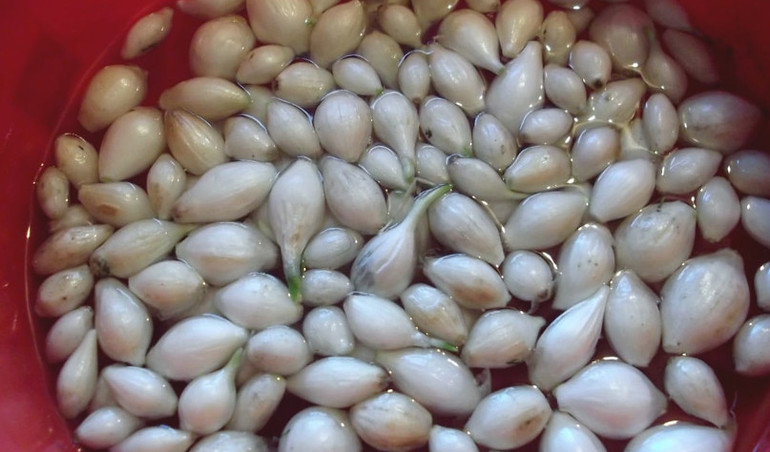
In many ways, the success of growing garlic in a household plot depends on the correct choice of planting material. The cloves should be chosen from large heads that have the same color without signs of rot and infectious diseases. It is forbidden to use those that have mechanical damage and peeling of the shell.
All planting material used should be soaked in growth stimulants and etched with foundationazole or similar preparations. Also for such processing, you can use a light solution of potassium permanganate. Immediately before planting for half an hour, all the selected cloves are soaked in saline, for the preparation of which it is necessary to dilute 2 tablespoons of salt in a liter of water.
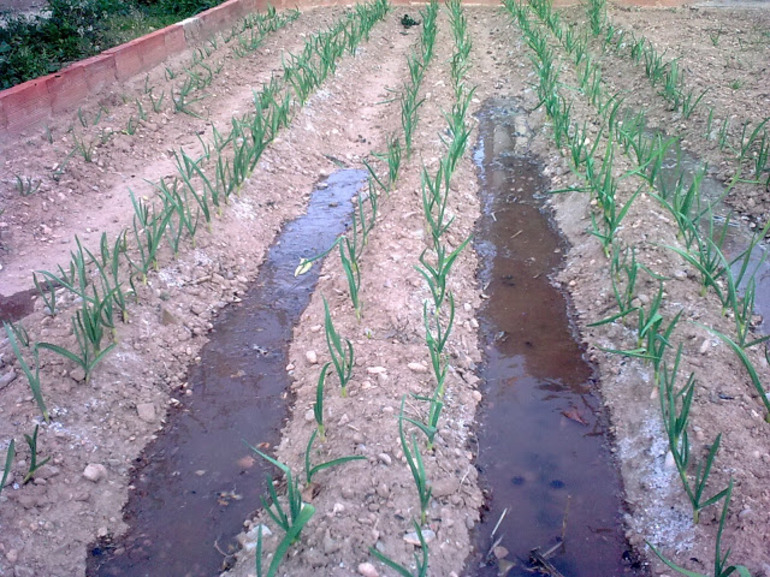
Proper preparation will provide protection against various diseases and pests. The gardener will be able to get the maximum possible yield, and during the growing season there will be no need to perform regular cultivation of the soil and vegetables from insects and infectious diseases.
Simplest care
The planting pattern of winter garlic cloves implies their row arrangement with a distance between plants of at least 20 cm. Each row is parallel to the previous one. Winter sowing of garlic is also possible, not with grooves, but in separate dimples. To do this, use the neck of a plastic bottle, which allows you to perform the necessary recesses in loose soft earth. Cogs always land upside down, while depth of autumn landing is 10-12 cm.Landing care consists of the following actions:
- Insulate the beds after planting.
- Perform regular watering.
- Weed soil and loosen the ground.
- Feed garlic with mineral and organic fertilizers.
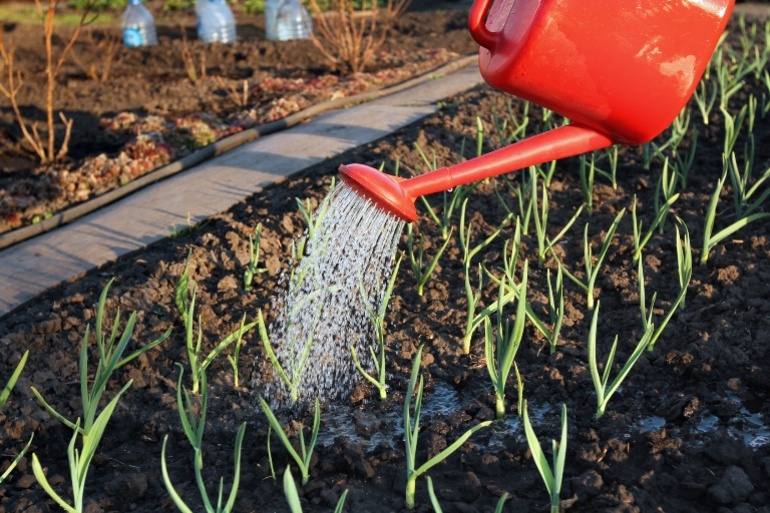
The bed must be mulched or covered with agrofiber, straw or similar materials. In the spring, before the first warm days, such shelter is removed. In the fall, watering is not required, but in the month of May and summer, you should irrigate the beds every one and a half to two weeks. Watering is stopped 15-20 days prior to the date of harvest.
Throughout the growing season, you need to regularly inspect the plants and without fail to remove all arrows. It will be impossible to obtain high-quality planting material from such shooting, while flowering significantly weakens plants, worsening its yield indicators.
The following formulations can be used to feed this vegetable crop during the growing season:
- Compost or high-quality humus - 10 kg.
- Superphosphate - 40 grams.
- Potassium nitrate or potassium sulfate - 40 grams.
The resulting nutritional composition will be sufficient for feeding one square meter of beds. It is recommended to carry out several such fertilizer applications during the growing season, which will provide the plants with all the necessary trace elements for them and positively affect the yield of garlic.

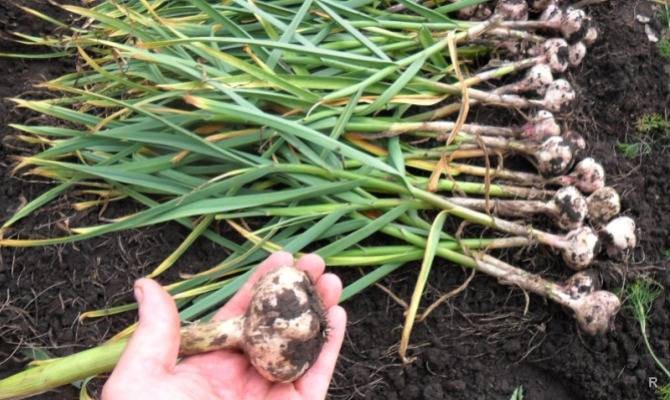
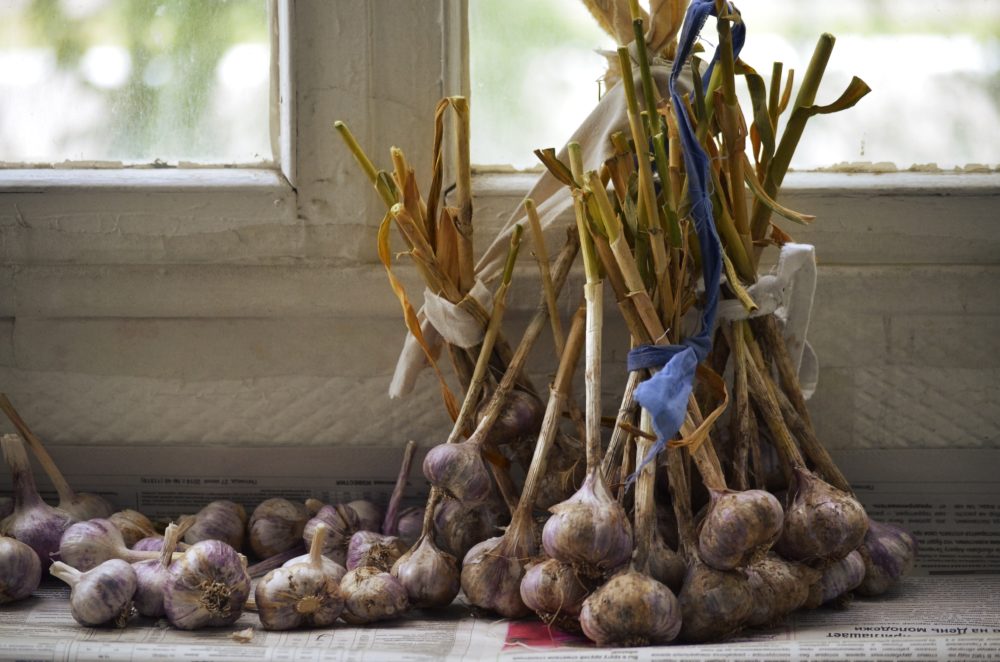
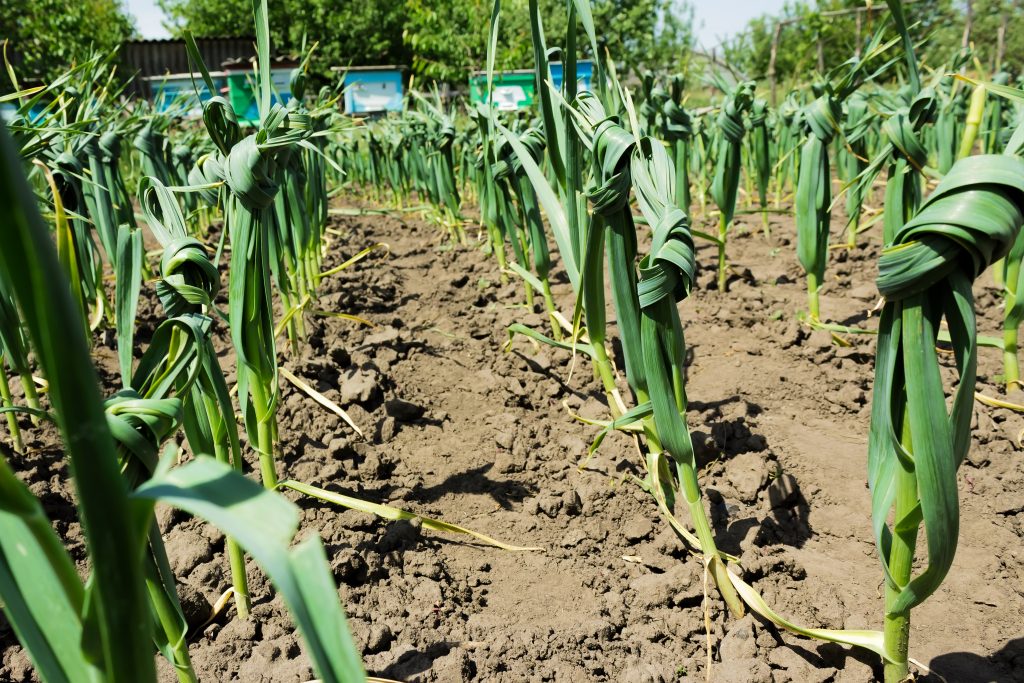
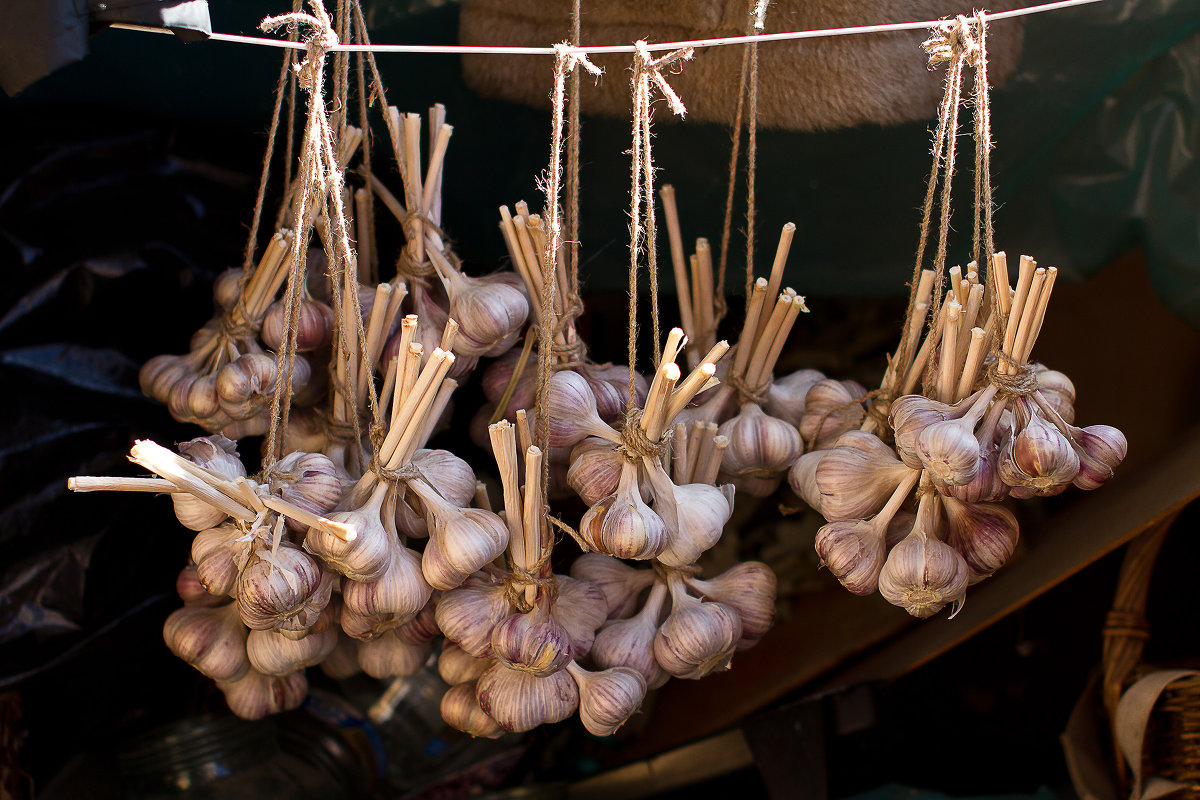 Methods for storing garlic in the winter at home
Methods for storing garlic in the winter at home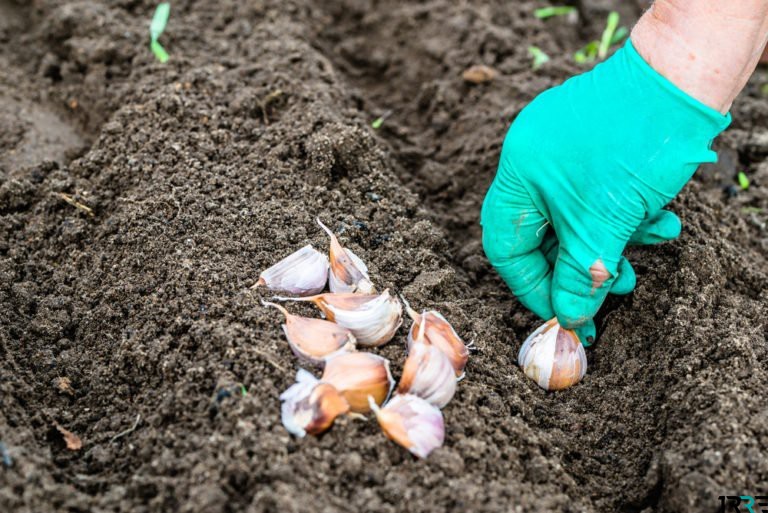 Processing garlic before planting in the winter: soaking garlic and tillage
Processing garlic before planting in the winter: soaking garlic and tillage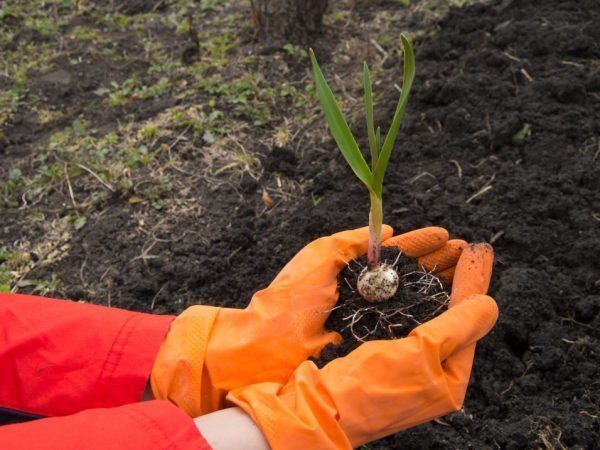 Fertilizers when planting garlic in the fall: how to fertilize the soil
Fertilizers when planting garlic in the fall: how to fertilize the soil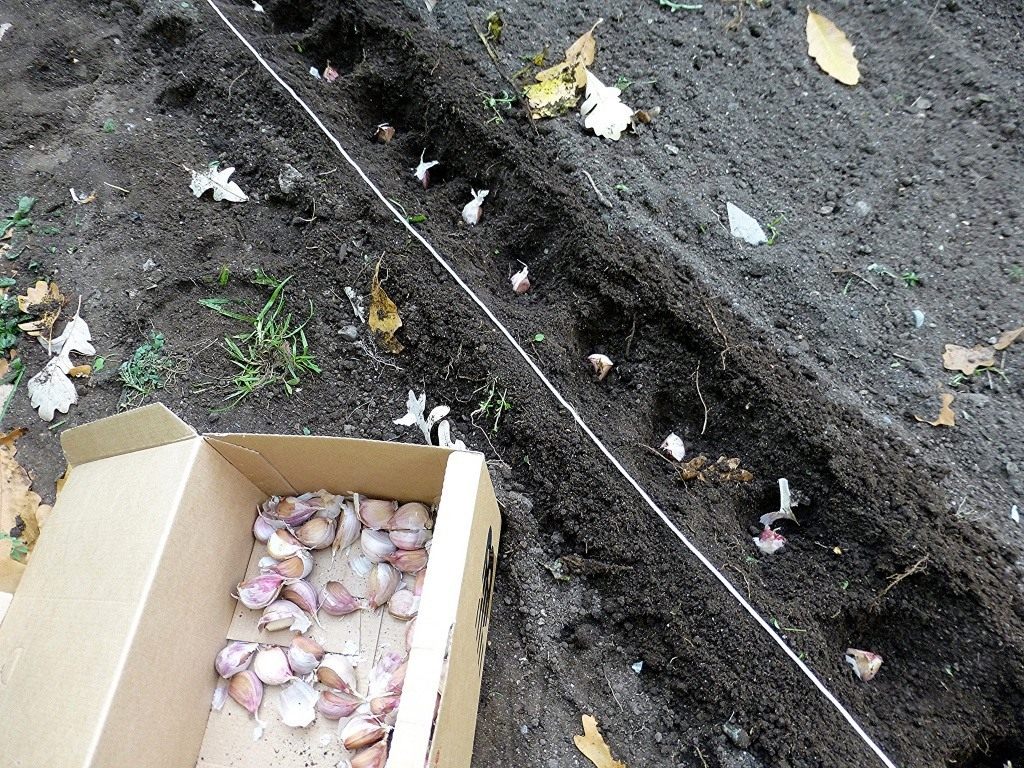 Features planting garlic in the winter in the fall
Features planting garlic in the winter in the fall